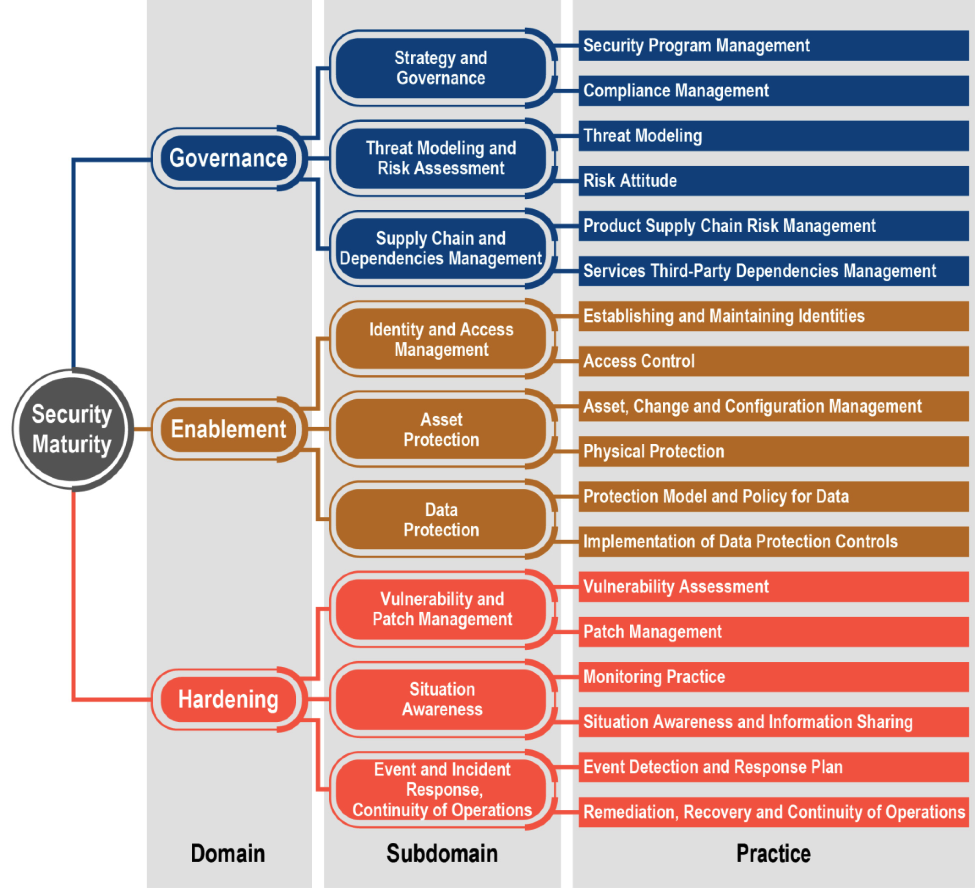The Industrial Internet Consortium (IIC) has just published the IoT Security Maturity Model Practitioner’s Guide or SMM (IIC press release). Also published is an update to the earlier IoT Security Maturity Model: Description and Intended Use white paper.
This IoT Security Maturity Model is timely, needed and new since it incorporates business, process, technology and operations aspects, and considers the security need from an integrated perspective including various contexts (end-end, device, edge, cloud, etc) and viewpoints such as information technology (IT) as well as Operational Technology (OT).
The IoT Security Maturity Model is a strategic document addressing the challenge of how to invest appropriately to address security needs and as a strategy provides an approach and model as well as actionable guidance. The need is to invest appropriately to address concerns, without investing too much or too little and by focusing in the areas that matter. The strategy is holistic, considering business, process, technology and operations.
An important concept is that of maturity. This is not the same as security levels, since it is about the degree of fit of the solution to the need. Thus if a situation does not require much security then even if few security mechanisms are applied the solution can be mature, since it is possible to demonstrate confidence that the correct approach has been taken.
The general approach is for business owners and technology owners to work together to set targets, then perform an assessment to determine the current state, identify and mitigate gaps, and then repeat this process periodically as threats, technologies and business concerns change. This creates a continuous improvement cycle.
The model has domains of governance (roughly process), enablement (technology) and hardening (operations) as well as the corresponding sub-domains and practices as shown in the following figure from the SMM:

Each domain, sub-domain and practice can have a comprehensiveness level associated with it, indicating the depth and completeness of that item, ranging from none, to minimal (1), ad hoc (2), consistent (3) and formalized (4). In addition, the model is extensible to address the needs of specific verticals (e.g. manufacturing, retail, medical etc) through the use of scope, to enable specifics relative to certain comprehensiveness levels to be defined. Scope also allows system specifics as well. A set of comprehensiveness levels including scope may be defined as an industry profile.
The IoT Security Maturity Model has a table for each of the eighteen practices, providing detail for each of the comprehensiveness levels, including an objective that can be used by business stakeholders, as well as a general description of the level, what needs to be done to achieve it, and indicators of accomplishment. Such indicators can be used to determine in an assessment if the level has been achieved.
The IoT Security Maturity Model includes examples drawn from different verticals for each of the practice comprehensiveness tables as well as case studies at the end. The case studies are based on real assessments that were done previously, recast into the IoT Security Maturity Model to demonstrate that it works for real cases as well as to provide examples that can be understood.
Best Practices from the IIC and elsewhere can be used to provide detailed guidance on addressing the gaps. We are also working on additional guidance in the form of mappings from IoT Security Maturity Model comprehensiveness levels to details in other frameworks like the IIC Security Framework, and IEC 62443, the NIST Cybersecurity Framework and others (e.g. comprehensiveness level 3 maps to this specific guidance). We also are looking to work with partners on creating profiles for verticals.
Thinking long term we have looked at how this model might also be applicable to the concept of Trustworthiness, which includes security, safety, reliability, resilience and privacy taken together and outlined some thoughts on this in the IIC Journal of Innovation Trustworthiness issue.
This post just introduces the IoT Security Maturity Model. For more complete details, definitions and explanations please refer to the Practitioner’s guide itself. If you would like to participate in further developing this work please join us at the IIC.